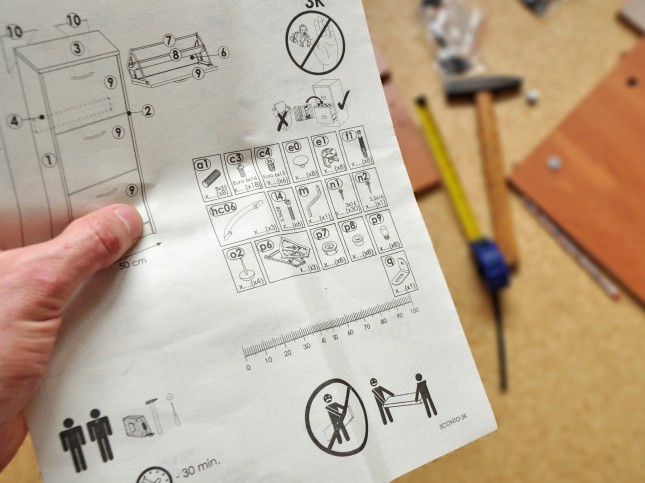Lean Communication for Leaders Part 6: Dialogue
Podcast: Play in new window | Download
If you want to be a more effective leader, remove the megaphone from your mouth and hold it up to your ear.
Why do you need dialogue in leadership communication? When you know what has to be done, isn’t it more efficient to just tell people what to do, and have them do it without bothering to question you?
The reality is that despite how hard you work to produce brief, clear and valuable messages, you usually need dialogue to close the deal—to ensure that the message has had its intended effect and to make adjustments if not.
Dialogue ties directly back to the first five episodes in this series: it’s enormously useful to keep you out of the three leadership communication traps, to add value, and to prevent waste.
Dialogue can prevent or mitigate the three leadership traps you may fall into. You’re less likely to rely on the ethos trap of “because I said so” when you welcome open questioning and disagreement. Empathy erosion is less likely when you’re having meaningful conversations with individuals rather than a faceless mass of followers. Control becomes both lighter and more effective for two reasons: everyone understands each other better, and you get a clearer picture of what’s happening outside your isolated corner office.
Dialogue can add value by producing better ideas, more vigorously executed. Better ideas result from productive disagreement and broader input from people with diverse viewpoints, experiences, and knowledge sets. Second, it gets people more engaged, and that makes them more productive.
Dialogue prevents waste through the clarity it brings, not only for your followers but just as importantly for you as well. Without it, you can’t be sure people understand your intentions, and you have no idea how your intentions translate into real world results. In a turbulent environment, situational awareness is critical, and that requires knowing what’s happening at the margins where the real work gets done.
Tools to improve dialogue
The simplest way to improve dialogue is to announce an open-door policy and mean it. But that’s passive, and it’s also reactive. It’s tempting to rely on reports and what your immediate reports tell you, but that information can’t help but be colored by filters and silos which may prevent you from getting a true picture.
So, regardless of how busy you think you are, you need to get out of your office and engage people at various levels. It’s called MBWA, Management by Walking Around, and it does two things for you. It shows people you care. At the same time, by being random it prevents people preparing for your visit and showing you only what they want you to see, Potemkin village style.
A more structured form of MBWA is going to the gemba, literally, the “actual place” where things where the value creation happens, in front of customers, on the shop floor, and in the offices. Toyota Chairman Fujio Cho suggests, “Go see, ask why, show respect”.
Some managers like to structure formal meetings where they get out and talk to groups. Just take care not to make them too large, because people will be less likely to speak up. Boris Groysberg and Michael Slind, authors of Talk, Inc., recommend keeping these meetings small—30-40 participants—because people are reluctant to speak up in larger groups. But here’s where the “show respect” part comes in: be prepared to be vulnerable, to admit that you may not have all the answers, and to accept criticism.
There’s a formal process in lean called hoshin kanri, also called policy deployment, in which strategic plans are cascaded to the appropriate levels to ensure consistency and alignment. Using a process called “catchball”, leaders toss ideas down a level, who then toss back their own input; it’s exactly the same process called backbriefing that military organizations use to ensure everybody aligns with the plan.
How to get people to open up
One of the major challenges of leadership dialogue is to get people to open up and speak their minds to superiors. In my previous podcast, I talked about the need to make it safe for people to bring up unpleasant news or disagree with the boss.
But safety isn’t enough, because people keep quiet for other reasons than fear of consequences. They may feel like it won’t make a difference, because no one will pay attention. They may be naturally loath to speak up to people they perceive as more powerful.
Even a well-meaning culture may discourage speaking out in certain circumstances. A strong data-driven culture may generally be a good thing, but when it prevents people from voicing their doubts because they don’t have hard data to back up their feelings, bad things may happen, as NASA discovered after both the Challenger and Columbia disasters.[1]
And then there’s the old idea of “don’t bring me a problem unless you have a solution.” It’s meant to tamp down griping, but it can also keep you from finding out about potential problems before they get out of hand. If someone sees a problem and doesn’t know how to solve it, do you really want them to keep quiet about it until they’ve figured out a solution they can present to you?
So when things seem to be going fine, you may need to draw people out. One of the best examples I’ve heard comes from Alfred P. Sloan, former Chairman of GM, who once ended a senior executive meeting by saying: “Gentlemen, I take it we are all in complete agreement on the decision here. Then I propose we postpone further discussion of this matter until the next meeting to give ourselves time to develop disagreement, and perhaps gain some understanding of what the decision is all about.”
Create a culture where people not only feel safe, but feel a responsibility to bring up bad news or disagreement. Lean factories have an andon cord, which any employee may—no, must—pull anytime they see a problem. It’s like the public service ads that say: “See something, say something”.
Informality is a helpful way to get people to open up because it reduces power distance—people feel freer to speak up when they are not blatantly reminded of the rank difference. That’s one reason that hierarchical structures such as Japanese companies and the Royal Navy encourage after hours karaoke and drinking, or dinners and outside team activities, respectively.
Informality doesn’t mean you have to trash the chain of command, just that you have the right balance. Rex Geveden, who made several critical decisions as he rose to assistant administrator of NASA, put it this way: “The chain of communication has to be informal, completely different from the chain of command.”[2]
Maybe one way to reduce the power distance feeling is to change the prepositions you use when you think about leadership. Instead of a vertical hierarchy that uses words like up or down, think of a circular structure, with you in the middle and followers out where the real work gets done. I love the way this Ritz-Carlton policy expresses it: “Push authority out to information, not information to authority.”
Here are some additional tips to make you a better listening leader:
- Speak last. Let others express their opinions before they hear yours.
- When people do speak up, listen carefully and fully; don’t rush to answer or solve their problem.
- Draw people out. Frequently, the first answer out of someone’s mouth is not the best or the most candid, so invite them to say more. “Tell me more about that…” is a great phrase.
- Practice responsive listening. Show people they’ve been heard.
I need to close with one final reminder: dialogue is not an abdication of leadership. Just because you’re listening to input does not mean that you have to accept it. It’s not a popularity contest, or mindless consensus seeking. You still have the responsibility to make the hard decisions.
But you will make better decisions and get better results when you engage your followers in purposeful and productive dialogue. In short, you will be a better leader.
[1] David Epstein shares valuable lessons from these episodes in his book Range: Why Generalists Triumph in A Specialized World, Chapter 11.
[2] David Epstein, Range, p. 262.






